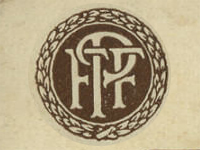| Year | Event |
|---|
| 1886 | Westinghouse Electric Corporation is founded as Westinghouse Electric & Manufacturing Company |
| 1912 | Famous Players Film Company is founded |
| 1913 | Lasky Feature Play Company is founded |
| 1914 | Paramount Pictures is founded |
| 1916 | Famous Players and Lasky merge as Famous Players–Lasky and acquire Paramount |
| 1927 | Famous Players–Lasky is renamed to Paramount Famous Lasky Corporation; CBS is founded with investment from Columbia Records |
| 1929 | Paramount acquires 49% of CBS |
| 1930 | Paramount Famous Lasky Corporation is renamed to Paramount Publix Corporation |
| 1932 | Paramount sells back its shares of CBS |
| 1934 | Gulf+Western is founded as the Michigan Bumper Corporation |
| 1935 | Paramount Publix Corporation is renamed to Paramount Pictures |
| 1936 | National Amusements is founded as Northeast Theater Corporation |
| 1938 | CBS acquires Columbia Records |
| 1950 | Desilu is founded and CBS distributes its television programs |
| 1952 | CBS creates the CBS Television Film Sales division |
| 1958 | CBS Television Film Sales is renamed to CBS Films |
| 1966 | Gulf+Western acquires Paramount |
| 1967 | Gulf+Western acquires Desilu and renames it Paramount Television (now CBS Studios) |
| 1968 | CBS Films is renamed to CBS Enterprises |
| 1970 | CBS Enterprises is renamed to Viacom |
| 1971 | Viacom is spun off from CBS |
| 1987 | National Amusements acquires Viacom |
| 1988 | CBS sells Columbia Records to Sony |
| 1989 | Gulf+Western is renamed to Paramount Communications |
| 1994 | Viacom acquires Paramount Communications |
| 1995 | Paramount Television and United Television launch UPN; Westinghouse acquires CBS |
| 1997 | Westinghouse is renamed to CBS Corporation |
| 2000 | Viacom acquires UPN and CBS Corporation |
| 2005 | Viacom splits into the second CBS Corporation and Viacom |
| 2006 | Skydance Media is founded as Skydance Productions; CBS Corporation shuts down UPN and replaces it with The CW |
| 2009 | Paramount and Skydance enter an agreement to co-produce and co-finance films |
| 2017 | CBS Corporation sells CBS Radio to Entercom (now Audacy) |
| 2019 | CBS Corporation and Viacom re-merge as ViacomCBS |
| 2022 | ViacomCBS is renamed to Paramount Global |
| 2025 | Skydance acquires National Amusements and merges with Paramount Global as Paramount Skydance |
